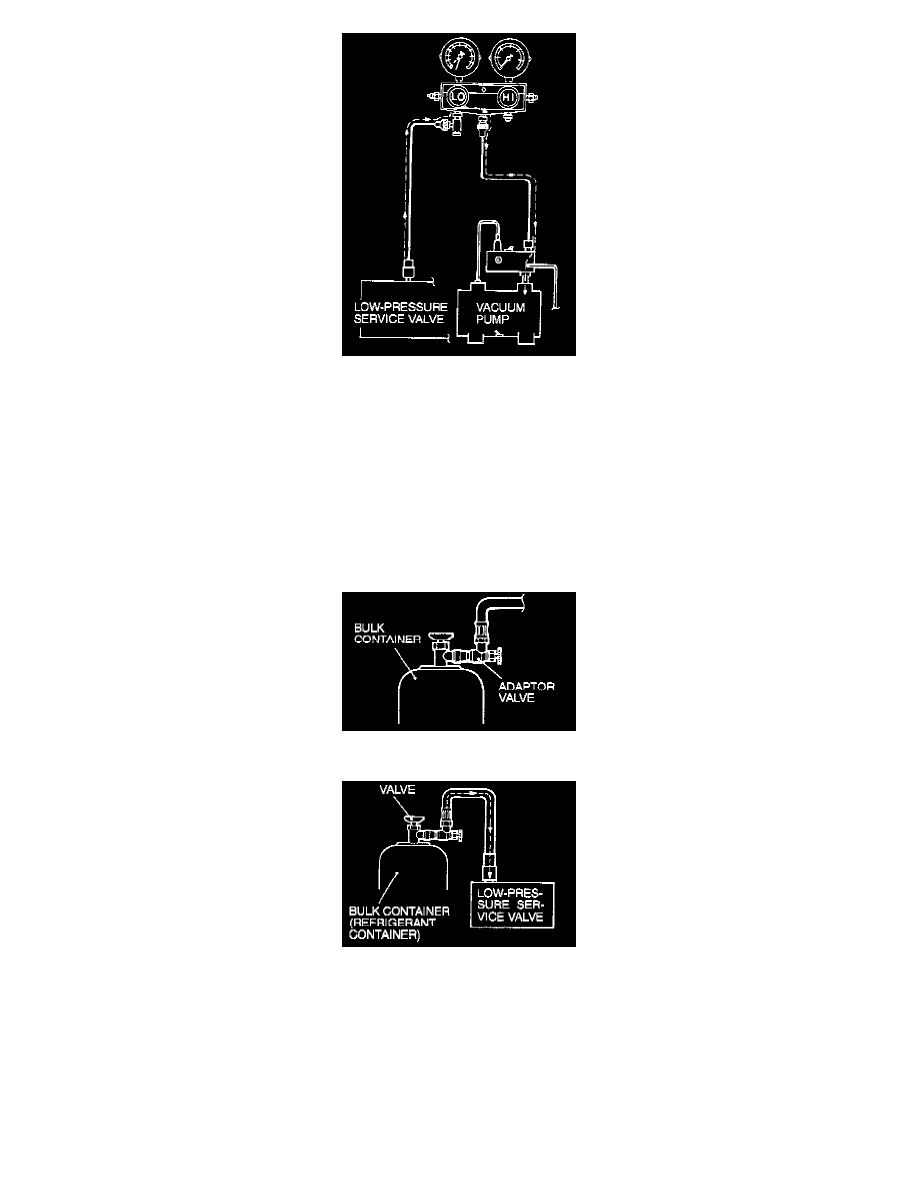Montero Sport LTD 4WD V6-3.5L SOHC (1999)

CAUTION: Do not operate the compressor for evacuation.
12. Turn the vacuum pump adaptor switch to the R-134a side to start the vacuum pump.
13. Evacuate to a vacuum reading of 100 kPa (29.5 inHg) or higher (takes approximately 10 minutes).
CAUTION: Do not operate the compressor in the vacuum condition; damage may occur.
14. Turn the vacuum pump adaptor switch "OFF" and allow to stand it for 5 minutes.
CAUTION: If the negative pressure drops, increase the tightness of the connections, and then repeat the evacuation procedure from step (12).
15. Carry out a leak test. (Good if the negative pressure does not drop.)
16. Turn the handle of the adaptor valve back all the way (valve closed), remove it from the gauge manifold and install the bulk container.
17. Open the valve of the bulk container.
CAUTION: If the bulk container is inverted, liquid refrigerant may be drawn into the compressor damaging it by hydraulic lock. Keep the bulk
container upright to ensure that refrigerant is charged in gas state.
18. Tighten the handle of the adaptor valve (valve open) to charge the system with refrigerant.
19. If the refrigerant is not drawn in, turn the handle of the adaptor valve back all the way (valve closed).
CAUTION: The leak detector for R-134a should be used.
20. Check for gas leaks using a leak detector.
